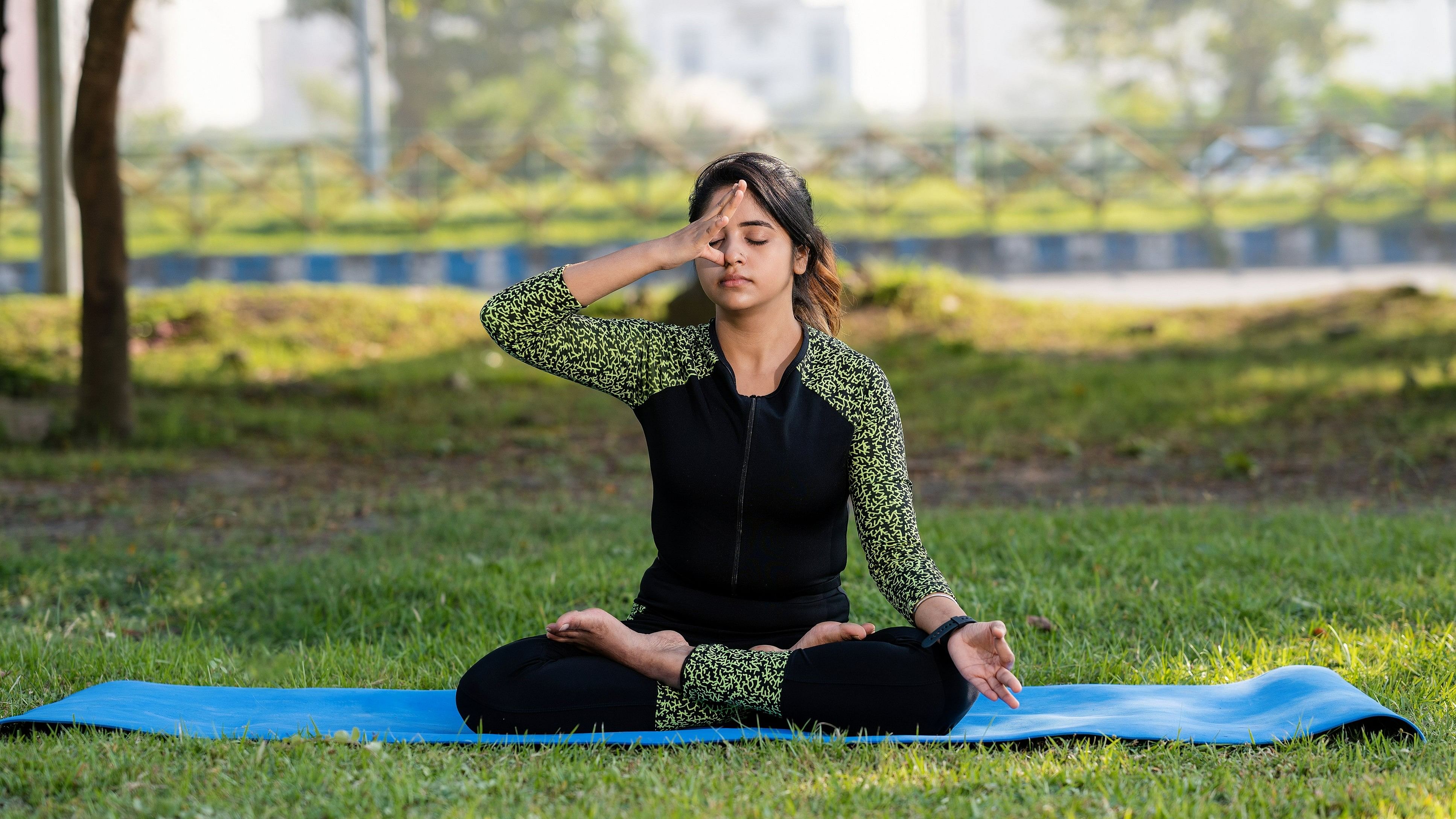
Nadi Shodhanan Pranayama.
Credit: iStock
Stage 1 hypertension, often termed prehypertension, indicates systolic (top number) readings between 120 mmHg and 139 mmHg, or diastolic (bottom number) readings between 80 mmHg and 89 mmHg. Prehypertension serves as an important warning sign, signalling the likelihood of developing high blood pressure in the future. Elevated blood pressure significantly amplifies the risk of severe health complications, including heart attack, stroke, coronary heart disease, heart failure, and kidney failure.
While there is no outright cure for high blood pressure, proactive measures can effectively manage and mitigate its progression. Naturopathy and yoga offer a holistic approach to address prehypertension.
Identifying underlying causes: Naturopathic doctors conduct thorough assessments to identify the underlying factors contributing to prehypertension. This may include examining lifestyle habits, dietary patterns, stress levels, hormonal imbalances, and genetic predispositions. By understanding the unique factors influencing an individual’s blood pressure, naturopathic practitioners can tailor treatment plans accordingly.
Dietary modifications: Nutrition plays a crucial role in managing prehypertension. Naturopathic doctors often recommend dietary modifications that prioritise whole foods rich in nutrients and antioxidants while minimising processed foods, sodium and added sugars. Emphasising a plant-based diet, high in fruits, vegetables, whole grains, and lean proteins, can help lower blood pressure and improve overall
cardiovascular health.
Lifestyle changes: Lifestyle factors such as physical activity, sleep quality, and stress management significantly impact blood pressure levels. Naturopathic practitioners emphasise the importance of regular exercise, adequate sleep, and stress-reduction techniques such as meditation, and deep breathing exercises. These lifestyle changes not only help lower blood pressure but also contribute to overall well-being.
Herbal supplements: Herbal medicine has long been used in naturopathic practice to support cardiovascular health and manage hypertension. Certain herbs, such as hawthorn, garlic, hibiscus, and olive leaf extract, have demonstrated potential in lowering blood pressure and improving vascular function. Naturopathic doctors may prescribe individualised herbal formulations based on a patient’s specific needs and health history.
Other therapies: In addition to dietary and lifestyle interventions, naturopathic treatment for prehypertension may incorporate other therapeutic modalities such as acupuncture, mud therapy, and hydrotherapy. These complementary therapies can help optimise blood circulation, reduce stress, and promote relaxation, improving blood pressure control.
Can yoga help in managing prehypertension?
Yoga, an ancient practice revered for its holistic approach to health, holds promise in aiding the management of prehypertension.
Through a combination of mindful movements, controlled breathing, and relaxation techniques, yoga offers a multifaceted approach to promoting cardiovascular wellness. Here are some yoga poses and pranayama that can be incorporated into your routine to help manage prehypertension effectively.
Tadasana (mountain pose)
• Stand erect with feet joined together and look in front at a point.
• Interlock the fingers. While inhaling, raise your hands and heels and turn your palms to face upwards.
• Maintain the position with normal breath for 20 seconds.
• While exhaling, bring the heels down.
Benefits: Improves balance, strengthens leg muscles, and fosters mental focus, while aiding in stress reduction and blood pressure regulation.
Setubandhasana (bridge pose)
• Lie on your back with your knees bent and feet flat on the floor, hip-width apart.
• Press your feet into the floor as you lift your hips towards the ceiling, engaging your glutes and thighs.
• Place the palms on the waist and support the back.
• Maintain the position with normal breath.
• To release the pose, bring the palms down and while exhaling, bring down the spine on the floor.
Benefits: Opens the chest, stretches the spine, promotes deep breathing, improves respiratory function and aids in blood pressure management.
Bhujangasana (cobra pose)
• Lie on your stomach, keep the legs together and place the palms beside the chest.
• While inhaling, engage the back muscles to lift your head, and upper torso and look up.
• Align elbows under shoulders for support.
• Maintain the position for some time with normal breathing.
• While exhaling, bring the chin down and relax.
Benefits: Gently stretches the spine, opens up the chest, improves breathing and promotes relaxation which helps control the blood pressure.
Sukhasana (the comfortable pose)
• Sit with your legs stretched out and your back erect.
• Place palms on the floor behind your hips, fingers pointing backwards.
• Cross your legs, right foot under the left thigh and left foot under the right thigh.
• Keep the spine straight, hands on knees, eyes closed and body relaxed.
• Breathe slowly and evenly, maintaining the pose.
Benefits: Promotes relaxation, reduces stress, and calms the mind, thereby helping to lower blood pressure.
Nadi Shodhanan Pranayama (alternate nostril breathing)
• Sit comfortably with your spine straight.
• Adopt nasika mudra with the right hand and place the left hand on the left knee.
• Close the right nostril with your right thumb, inhale gently through the left nostril and hold your breath for some time.
• Close the left nostril with the ring finger, and exhale through the right nostril.
• Now, inhale through the right nostril and hold the breath for some time, close the right nostril with the thumb and exhale through the left nostril. The exhalation must be longer than the inhalation.
• Repeat the practice for ten rounds.
Benefits: Balances nervous system, reduces stress, improves respiratory function, enhances mental clarity, and supports cardiovascular health.
Prehypertension, a significant lifestyle ailment, poses serious health risks and can even be fatal in some cases. The most effective approach to prevention involves reassessing dietary habits, embracing physical activity, and implementing stress-reduction techniques.
(The author is the chief medical officer of a naturecure institute.)